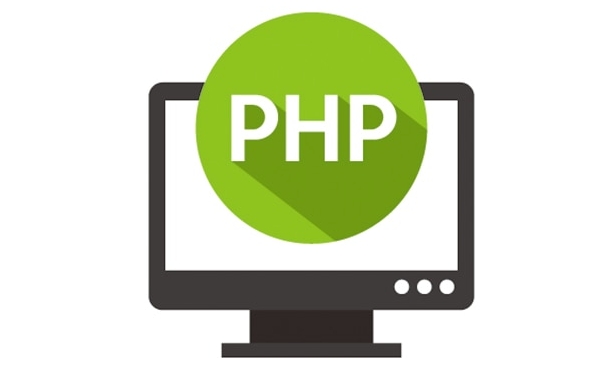To run PHP files, you must first configure Apache and PHP, and then place the .php file in the Apache root directory to access. 1. Make sure that Apache is installed and run, and can be used to check the status and start it with XAMPP, WAMP or commands; 2. Install the PHP and Apache modules and restart Apache, and use info.php to test whether it is effective; 3. Put the PHP file in the Apache root directory (such as /var/www/html/) and ensure the permissions are correct; 4. Common problems include downloading files instead of execution, blank pages, 403 errors, 500 errors, etc., and you should check the module loading, display_errors settings, file permissions and log troubleshooting respectively.

Running PHP files is actually not difficult, but it may be a bit confusing for newcomers. Simply put: you just need to correctly configure Apache and PHP, then place the .php file in the root directory of Apache's website and access it through the browser .

Here are some key steps and common problems to deal with:

1. Make sure Apache is installed and running
Apache must be installed and running before running the PHP file. You can check this way:

- Integration packages such as XAMPP and WAMP can be used on Windows;
- Linux users can view the status by command
sudo systemctl status apache2(Ubuntu) orhttpd(CentOS); - If it is not running, start Apache: for example, use
sudo systemctl start apache2on Ubuntu.
If you see the default page "Apache is working", it means that the service is normal.
2. Install PHP and associate it with Apache
PHP itself is not included in Apache, it needs to be installed separately and let Apache support it.
- On Ubuntu, you can install it like this:
-
sudo apt update -
sudo apt install php libapache2-mod-php
-
- After the installation is complete, restart Apache:
sudo systemctl restart apache2
This way Apache can recognize .php files. You can write a simple info.php to test the content:
<?php phpinfo(); ?>
Save it and put it in the root directory of Apache (such as /var/www/html/ ), and then visit http://localhost/info.php by the browser. If you see the PHP information page, it means that it is successful.
3. Put the PHP file in the right place
The default website root directory of Apache is usually:
- Windows (XAMPP):
htdocsfolder - Linux:
/var/www/html/
You need to put your .php file into this directory, or create a subdirectory. for example:
- Save as
/var/www/html/test.php - Browser access:
http://localhost/test.php
Pay attention to permission issues: Under Linux, you must ensure that Apache has read permissions. If necessary, you can use chmod or chown to adjust file permissions.
4. Troubleshooting of FAQs
Sometimes it all looks right, but it still goes wrong. Here are some common problems and solutions:
- The download box appears instead of executing the PHP file : It means that Apache does not load the PHP module correctly, check whether
libapache2-mod-phpis installed and the module is enabled. - Blank page : It may be a PHP error but it is not displayed. You can set
display_errors = Oninphp.ini. - 403 Forbidden : The file permissions are incorrect, or there is no
index.phpas the default entry. - 500 Internal Server Error : Generally, there is a problem with
.htaccessor configuration file. It is recommended to check the Apache log location error.
Log files are usually in:
- Ubuntu:
/var/log/apache2/error.log - Windows (XAMPP):
xampp\apache\logs\error.log
Basically these are the operations. Although the steps are not many, details are easy to ignore, especially the issues of permissions and module loading. As long as you take it step by step, it can usually be done.
The above is the detailed content of How to run PHP files on an Apache server?. For more information, please follow other related articles on the PHP Chinese website!

Hot AI Tools

Undress AI Tool
Undress images for free

Undresser.AI Undress
AI-powered app for creating realistic nude photos

AI Clothes Remover
Online AI tool for removing clothes from photos.

Clothoff.io
AI clothes remover

Video Face Swap
Swap faces in any video effortlessly with our completely free AI face swap tool!

Hot Article

Hot Tools

Notepad++7.3.1
Easy-to-use and free code editor

SublimeText3 Chinese version
Chinese version, very easy to use

Zend Studio 13.0.1
Powerful PHP integrated development environment

Dreamweaver CS6
Visual web development tools

SublimeText3 Mac version
God-level code editing software (SublimeText3)
 PHP Variable Scope Explained
Jul 17, 2025 am 04:16 AM
PHP Variable Scope Explained
Jul 17, 2025 am 04:16 AM
Common problems and solutions for PHP variable scope include: 1. The global variable cannot be accessed within the function, and it needs to be passed in using the global keyword or parameter; 2. The static variable is declared with static, and it is only initialized once and the value is maintained between multiple calls; 3. Hyperglobal variables such as $_GET and $_POST can be used directly in any scope, but you need to pay attention to safe filtering; 4. Anonymous functions need to introduce parent scope variables through the use keyword, and when modifying external variables, you need to pass a reference. Mastering these rules can help avoid errors and improve code stability.
 How to handle File Uploads securely in PHP?
Jul 08, 2025 am 02:37 AM
How to handle File Uploads securely in PHP?
Jul 08, 2025 am 02:37 AM
To safely handle PHP file uploads, you need to verify the source and type, control the file name and path, set server restrictions, and process media files twice. 1. Verify the upload source to prevent CSRF through token and detect the real MIME type through finfo_file using whitelist control; 2. Rename the file to a random string and determine the extension to store it in a non-Web directory according to the detection type; 3. PHP configuration limits the upload size and temporary directory Nginx/Apache prohibits access to the upload directory; 4. The GD library resaves the pictures to clear potential malicious data.
 Commenting Out Code in PHP
Jul 18, 2025 am 04:57 AM
Commenting Out Code in PHP
Jul 18, 2025 am 04:57 AM
There are three common methods for PHP comment code: 1. Use // or # to block one line of code, and it is recommended to use //; 2. Use /.../ to wrap code blocks with multiple lines, which cannot be nested but can be crossed; 3. Combination skills comments such as using /if(){}/ to control logic blocks, or to improve efficiency with editor shortcut keys, you should pay attention to closing symbols and avoid nesting when using them.
 How Do Generators Work in PHP?
Jul 11, 2025 am 03:12 AM
How Do Generators Work in PHP?
Jul 11, 2025 am 03:12 AM
AgeneratorinPHPisamemory-efficientwaytoiterateoverlargedatasetsbyyieldingvaluesoneatatimeinsteadofreturningthemallatonce.1.Generatorsusetheyieldkeywordtoproducevaluesondemand,reducingmemoryusage.2.Theyareusefulforhandlingbigloops,readinglargefiles,or
 Tips for Writing PHP Comments
Jul 18, 2025 am 04:51 AM
Tips for Writing PHP Comments
Jul 18, 2025 am 04:51 AM
The key to writing PHP comments is to clarify the purpose and specifications. Comments should explain "why" rather than "what was done", avoiding redundancy or too simplicity. 1. Use a unified format, such as docblock (/*/) for class and method descriptions to improve readability and tool compatibility; 2. Emphasize the reasons behind the logic, such as why JS jumps need to be output manually; 3. Add an overview description before complex code, describe the process in steps, and help understand the overall idea; 4. Use TODO and FIXME rationally to mark to-do items and problems to facilitate subsequent tracking and collaboration. Good annotations can reduce communication costs and improve code maintenance efficiency.
 Learning PHP: A Beginner's Guide
Jul 18, 2025 am 04:54 AM
Learning PHP: A Beginner's Guide
Jul 18, 2025 am 04:54 AM
TolearnPHPeffectively,startbysettingupalocalserverenvironmentusingtoolslikeXAMPPandacodeeditorlikeVSCode.1)InstallXAMPPforApache,MySQL,andPHP.2)Useacodeeditorforsyntaxsupport.3)TestyoursetupwithasimplePHPfile.Next,learnPHPbasicsincludingvariables,ech
 How to access a character in a string by index in PHP
Jul 12, 2025 am 03:15 AM
How to access a character in a string by index in PHP
Jul 12, 2025 am 03:15 AM
In PHP, you can use square brackets or curly braces to obtain string specific index characters, but square brackets are recommended; the index starts from 0, and the access outside the range returns a null value and cannot be assigned a value; mb_substr is required to handle multi-byte characters. For example: $str="hello";echo$str[0]; output h; and Chinese characters such as mb_substr($str,1,1) need to obtain the correct result; in actual applications, the length of the string should be checked before looping, dynamic strings need to be verified for validity, and multilingual projects recommend using multi-byte security functions uniformly.
 Quick PHP Installation Tutorial
Jul 18, 2025 am 04:52 AM
Quick PHP Installation Tutorial
Jul 18, 2025 am 04:52 AM
ToinstallPHPquickly,useXAMPPonWindowsorHomebrewonmacOS.1.OnWindows,downloadandinstallXAMPP,selectcomponents,startApache,andplacefilesinhtdocs.2.Alternatively,manuallyinstallPHPfromphp.netandsetupaserverlikeApache.3.OnmacOS,installHomebrew,thenrun'bre






